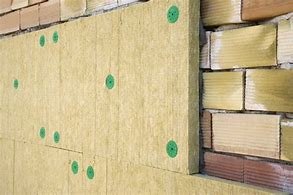Where Healthy Homes Begin: The Crawlspace!
It might be out of sight—but it should never be out of mind.
You can’t build a truly healthy home without first addressing the environment it sits on. At Earth Bound Homes, we start with the crawlspace—not as an afterthought, but as the foundation of wellness, durability, and smart design.
Take the Asymmetric House as a model: here, the crawlspace isn’t just a hollow space under the floor—it’s a sealed, insulated, and conditioned zone that plays a critical role in the home's overall performance and health.
Why Does the Crawlspace Matter?
The conditions beneath your home directly impact air quality, energy efficiency, and long-term maintenance. An untreated or vented crawlspace can introduce:
Radon and other soil gases
Mold from moisture intrusion
Pests like rats, insects, and termites
Energy loss through uninsulated floors
A conditioned crawlspace, like the one at the Asymmetric House, solves these problems. It’s designed to:
❌ Block radon and soil gases from entering your living space
❌ Keep out pests and moisture, which can cause structural damage
✅ Protect indoor air quality—because up to 50% of the air in your home can originate from the crawlspace
✅ Provide easy access to plumbing, electrical, and HVAC systems for repairs and upgrades
✅ Stay clean, dry, and functional for the life of the home
Why Not Build on a Slab?
Slab foundations may seem simple and economical at first glance, but they can create major limitations down the road. When systems like plumbing or electrical fail or need to be upgraded, you’re forced to:
🔨 Cut into concrete
💸 Add cost and complexity
🌫️ Disrupt your home with dust and debris
In contrast, a properly built crawlspace offers flexibility, cost savings over time, and a healthier indoor environment—without compromising performance.
The Smart Foundation for a Better Future
What’s truly remarkable is that building a conditioned crawlspace doesn’t require high-tech systems or massive budgets—it simply takes care, thoughtfulness, and a commitment to doing things right from the start.
At Earth Bound Homes, we believe health starts from the ground up. That’s why every detail—especially the invisible ones—are designed with your family’s well-being in mind.
🏡 Build smarter. Live healthier. Start with the crawlspace.





